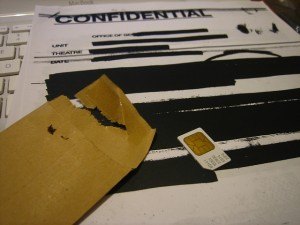Here is something I don’t get. If it is safe for demolition workers to go through the contents of earthquaked buildings before/while/after they’re demolished, why is it not safe for the occupiers?
“Safes found during demolition – there had been only half a dozen – were either opened under police or security firm supervision, or, if they were attached to concrete, dumped.”
Why is this even necessary? Is it that hard to work out that a safe found in the rubble of building X maybe belongs to someone occupying building X? Could we build on that and guess that someone occupying building X would be able to open the safe themselves, without force, even if it is attached to concrete?
 Scarier, is that computers and files containing confidential information, in this case mental health records are 1) being “thrown out” at all and 2) if they are “water-damaged”, which doesn’t fly with me, aren’t being disposed of securely.
Scarier, is that computers and files containing confidential information, in this case mental health records are 1) being “thrown out” at all and 2) if they are “water-damaged”, which doesn’t fly with me, aren’t being disposed of securely.
“The items she was most concerned about included files and computer hard drives containing personal information. Securities House, a seven-level building in Gloucester St near Latimer Square, was demolished by March Construction and Shilton and Brown in May. It housed at least nine mental health agencies.
Tenants, tipped off about the demolition, managed to stop a truck leaving the site in the rain and divert it to an empty section where the contents were tipped.
Tenants then spent the next two days retrieving files from the rubbish. The files had been in locked metal cabinets which had been emptied.
Office manager Mark Petrie said he had contacted a project manager at the time of the demolition to be told no chance existed for any records or personal effects to be salvaged.
He was told all records were water-damaged and filing cabinets rusted.
A former Shilton and Brown worker who worked on the Securities House demolition told The Press workers were told to throw files, many of which appeared to him to be in good order, in the rubbish.”
Where have some files gone? Who knows.
“Canterbury Muscular Dystrophy Association office manager Eris Le Compte, whose office was on the first floor of Community House, said she had gone to look for the 230 personal medical files she had in her office.”
Hopefully other businesses are doing better, because it’s not just a couple of buildings in the red zone that are housing sensitive information.
CERA feigns ignorance. Clearly some demolition contractors have no idea what they’re doing (or every idea of what they’re doing). If CERA has no knowledge of specific cases of important belongings going missing inside the red zone they’re obviously not doing a very good job.
“A CERA spokeswoman said CERA regularly and actively engaged with contractors who had a clear understanding of their obligations within contracts and the law.
‘We have no knowledge of the specific cases you refer to and we can’t comment on whether any allegations of loss of goods within the CBD Red Zone are attributed to contractors’ staff or some other person,’ the spokeswoman said.”
What’s been going on inside the red zone raises a number of issues businesses need to be planning for. After an event like the Canterbury Earthquake, how effective will locks, safes, and filing cabinets be at protecting valuable and confidential information through demolition and when 930+ people are left roaming in and around your building for a significant period of time?
Image credit: Jeremy Keith
One thought on “Red Zone Secrets”